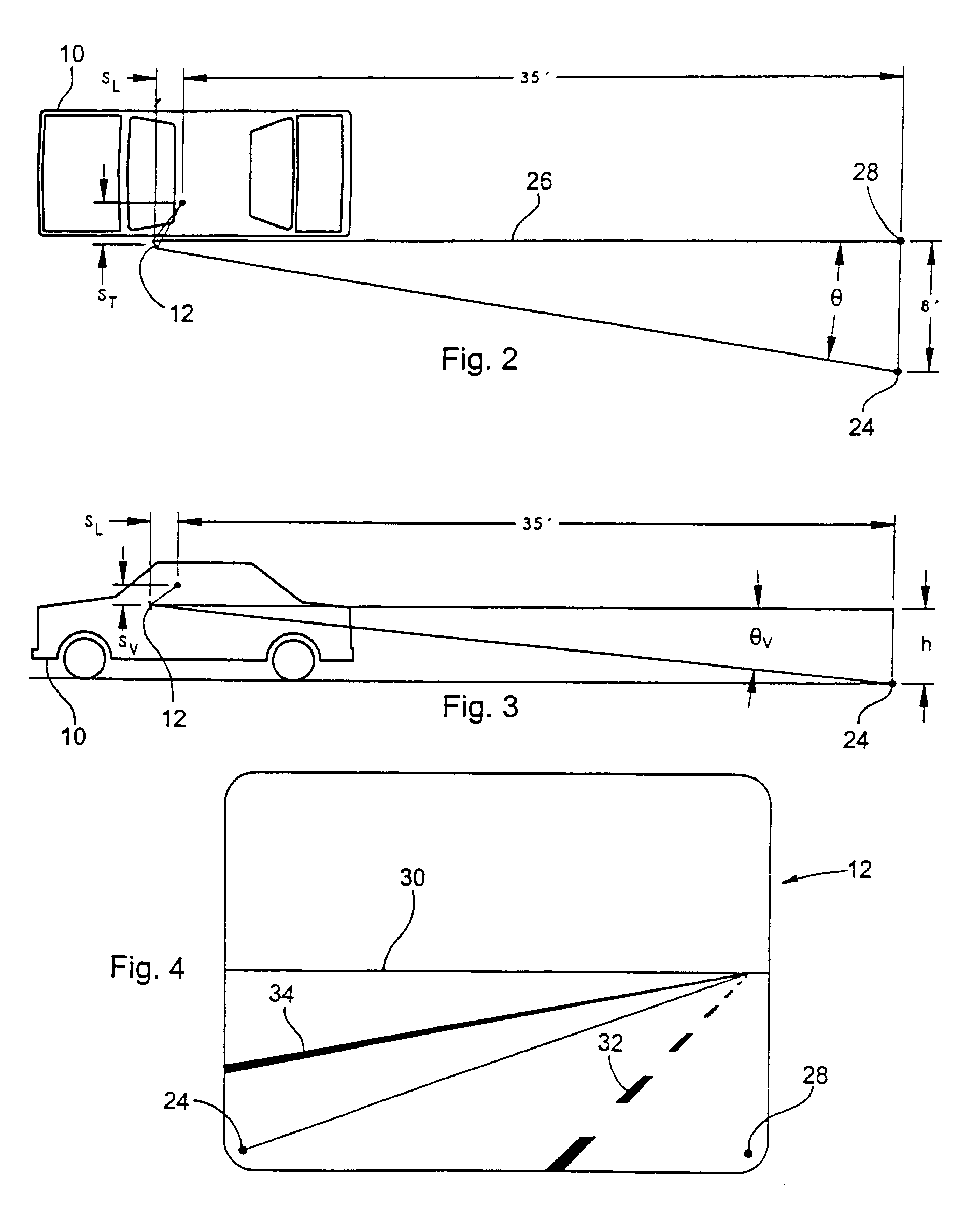Compound automotive rearview mirror
a rearview mirror and composite technology, applied in the field of mirrors, can solve the problems of inability to view the adjacent lanes, insufficient adjacent lane visibility of the fmvss 111, and inability to observe vehicles with a glance over the shoulder, etc., to achieve the effect of convenient manufacture and low cos
- Summary
- Abstract
- Description
- Claims
- Application Information
AI Technical Summary
Benefits of technology
Problems solved by technology
Method used
Image
Examples
Embodiment Construction
)
[0112]Referring now in greater detail to the drawings, FIG. 1 shows a mid-sized passenger car 10 in the middle lane of a three-lane highway with 12-foot wide lanes. The vehicle 10 is equipped with a driver's side outside mirror 12. The driver's eyes are shown centered at point 14, from which the driver has a field of view to the rear in the horizontal plane encompassing the acute angle formed by lines 16 and 18. Line 20 defines the rearward limit of the driver's peripheral vision when looking at mirror 12. Thus, the area bounded by lines 18 and 20 is a blindzone, shown crosshatched, which cannot be observed in either the driver's direct forward vision or indirectly in the mirror.
[0113]SAE Technical Paper 950601 describes the horizontal field of view of a plane mirror in a mathematical equation as a function of the mirror's dimensions and the position of the eyes relative to the mirror. Typically, the angle subtended by lines 16 and 18 is in the order of 15° to 20°. Angle θ is given...
PUM
 Login to View More
Login to View More Abstract
Description
Claims
Application Information
 Login to View More
Login to View More - R&D
- Intellectual Property
- Life Sciences
- Materials
- Tech Scout
- Unparalleled Data Quality
- Higher Quality Content
- 60% Fewer Hallucinations
Browse by: Latest US Patents, China's latest patents, Technical Efficacy Thesaurus, Application Domain, Technology Topic, Popular Technical Reports.
© 2025 PatSnap. All rights reserved.Legal|Privacy policy|Modern Slavery Act Transparency Statement|Sitemap|About US| Contact US: help@patsnap.com



